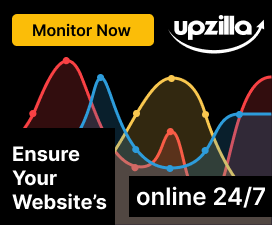SEOPub
Well-known member
- Joined
- Mar 15, 2015
- Messages
- 1,656
- Points
- 83
Because someone that does not know me at all decided to declare that I do not offer anything helpful on this forum or other forums... They obviously know nothing about the hours I spend helping people one-on-one who reach out to me for help, for free. But to show that there are no hard feelings, here is an actual onpage optimization guide. This is taken word-for-word from my members area and has been not posted anywhere else.
Enjoy...
Over the past 18-24 months, I believe that Google has turned up the dial for onpage SEO factors. Meaning, they are counting them more heavily than before. That doesnt mean links are useless (they heavily turned up the dial on internal links), and no, content is not king. However, you can give your webpages a head start over the competition by making sure you are hitting these primary factors.

A – Title Tag
Generally, I try to keep my title tags under 65 characters. Google used to limit them to 70 characters that they would display in the SERPs, but they have changed that to pixels, so it depends what letters you are using. W uses more pixels than I. At 65 characters, you should be fine. That guideline mostly has to do with your click thru rate versus SEO. You will get a better CTR if your full title is visible in the SERPs.
As far as SEO value, the title tag is one of the most powerful onpage factors. Do not overlook it. Do not just throw something together. Your main keyword phrase should appear first or as close to first as possible.
If you are targeting senior life insurance,
Senior Life Insurance – Great Rates – Free Quotes
Would be preferable to
Get great rates and free quotes on senior life insurance
A mistake I often see is a business name or the webpage name appearing first in the title tag of every page. I am not against appending a business name to the title tags, just do it at the end.
Senior Life Insurance – Cobra Kai Financial Group
Versus…
Cobra Kai Financial Group – Senior Life Insurance
B – URL Structure
Make sure your primary keyword appears in the URL. Use hyphens to separate keywords.
www. example.com/senior-life-insurance
Versus…
www. example.com/seniorlifeinsurance
or
www. example.com/senior_life_insurance
There is some debate about how Google treats underscores. Some people think they treat them like hyphens, but I have seen some tests that say otherwise. Just avoid them.
Use the hyphens. Do not leave it up to search engines to guess where the word breaks should be. Let’s say you created a new keyword tool you named Keywords Hitter. You give it a root term and it spits out a list of some of the best related keyword options. Now if you were writing a webpage about it, and did not use hyphens, it would look like
www. greatdomain.com/keywordshitter
Is that Keywords Hitter or Keyword Shitter?
(NOTE: Keyword Shitter is an actual keyword tool.)
I already wrote a guide with some other [URLnf="http://spartanmarketingacademy.com/forums/topic/477-maximizing-url-structure/"]tips on URL structure here[/URLnf]. Make sure you check it out.
C – Business/Contact/User Links
You can think of links on your page as a declining gradient. Generally, each link is weaker than the next. There are some other factors that go into it such as sidebar links versus in-context links, etc. But as a general guide, the first links on your page are the strongest. So do not waste this prime real estate on Contact Me or About pages. Avoid links here at all if you can. Web users are smart enough to know that they might have to scroll to the bottom of a page to find those sort of links, so stuff them in the footer.
D – Logo/Header
A couple of things to keep in mind here. First, if you are making your header a clickable image to your homepage, then I would not put a homepage link in your navigation menu. You are just adding more links and diluting them all.
If your header is a clickable image, make sure you are using alt text to give it some keyword relevance. Search engines see alt text in pretty much the same light as anchor text when an image is a link. Do not leave it blank. Do not use just homepage or home. Make it relevant.
E – Navigation Menu
Again, these are prime links. Do not waste them. If you are using a home link in your navigation, one trick you can do instead of just using home is to use a small image for the home link and add alt text to it to make it a more relevant link.
Normally I am linking to categories of the website in the navigation. Fairly broad terms. I’m not going to put something like best senior life insurance quotes online in the navigation menu.
F – Article or Page Title
This should be in H1 tags. It should be keyword rich. Some people like to make it the same as their title tag. I like to change it up and make it something similar or even use some LSI keywords here.
For example, using the title tag I mentioned above where I am targeting senior life insurance…
Title Tag – Senior Life Insurance – Great Rates – Free Quotes
I would use something like
Life Insurance for Seniors
Or
Finding Great Rates on Life Insurance for Seniors
For my page title. Keep it similar to what your title tag is though. You dont want users clicking on your search result and finding a page title that is unexpected.
G – Beginning of Your Content
When it comes to in-context links, this is your prime linking area. Whether you are linking to an external website or an internal page, this is ideally where you want your most valued link to be.
I wont push aside user experience at the expense of that, but if I can get my link in the first two paragraphs in a way that makes sense, that is where it is going.
Also, any kind of sub-headings you build in the article you want to properly categorize with H2 tags and even H3 tags for headings within headings.
H – Image Optimization
This is another spot many marketers fail to take advantage of. There are a few things you want to make sure you do with your images. First of all, give them a file name with your keywords or some very closely related keywords in them. Use hyphens.
senior-life-insurance.jpg
Not
seniorlifeinsurance.jpg
Other examples
senior-life-insurance-quote.jpg
shopping-for-senior-life-insurance.jpg
Search engines will parse the file names at the hyphens. Do not leave it up to them to guess.
Next, use alt text with keywords. Sometimes I will even put a longer, more descriptive bit of text in the alt text.
Life insurance for seniors
Life insurance for seniors quotes
An elderly man sitting at a table about to sign his senior life insurance policy
These would all be acceptable in my view. This is a great place to use some LSI keywords.
You want to minimize the file size as much as possible on images without compromising image quality. This will increase the page’s load speed. You can do that with something like Photoshop or Gimp (free Photoshop knockoff).
Lastly, resize your images to exactly what you need on your webpage. A lot of webmasters will use HTML/CSS to resize the image. They might have an image that is 1000 x 800 pixels that they resize to 250 x 200 in the code. The problem with that is browsers are loading the full 1000 x 800 pixel image, and then resizing it. It creates a bigger file size that will take longer to load, unnecessarily. So resize your images first, then upload them.
I – Link Out
If you are going to link out to another relevant site, this is the place to do it, a little further down in the content. Linking out to other relevant authority pages is a useful signal to search engines to tell them further what your page is about.
Wikipedia is not the only authority out there. Dont fall in love with it and think that every “authority†link you build has to be to Wikipedia.
J – Footer
This is the weakest area to put links. So put all the stuff you do not care about ranking (Contact Me, Privacy Policy, Terms of Service, Disclaimer, etc. pages) here.
A big mistake from an SEO-perspective that I see a lot of webpages make is they duplicate most or all of the links that are in their navigation bar again in their footer. All that does is weaken all of your links throughout the entire site. Some big sites can get away with that. None of us have sites of that sort of authority.
Enjoy...
Over the past 18-24 months, I believe that Google has turned up the dial for onpage SEO factors. Meaning, they are counting them more heavily than before. That doesnt mean links are useless (they heavily turned up the dial on internal links), and no, content is not king. However, you can give your webpages a head start over the competition by making sure you are hitting these primary factors.

A – Title Tag
Generally, I try to keep my title tags under 65 characters. Google used to limit them to 70 characters that they would display in the SERPs, but they have changed that to pixels, so it depends what letters you are using. W uses more pixels than I. At 65 characters, you should be fine. That guideline mostly has to do with your click thru rate versus SEO. You will get a better CTR if your full title is visible in the SERPs.
As far as SEO value, the title tag is one of the most powerful onpage factors. Do not overlook it. Do not just throw something together. Your main keyword phrase should appear first or as close to first as possible.
If you are targeting senior life insurance,
Senior Life Insurance – Great Rates – Free Quotes
Would be preferable to
Get great rates and free quotes on senior life insurance
A mistake I often see is a business name or the webpage name appearing first in the title tag of every page. I am not against appending a business name to the title tags, just do it at the end.
Senior Life Insurance – Cobra Kai Financial Group
Versus…
Cobra Kai Financial Group – Senior Life Insurance
B – URL Structure
Make sure your primary keyword appears in the URL. Use hyphens to separate keywords.
www. example.com/senior-life-insurance
Versus…
www. example.com/seniorlifeinsurance
or
www. example.com/senior_life_insurance
There is some debate about how Google treats underscores. Some people think they treat them like hyphens, but I have seen some tests that say otherwise. Just avoid them.
Use the hyphens. Do not leave it up to search engines to guess where the word breaks should be. Let’s say you created a new keyword tool you named Keywords Hitter. You give it a root term and it spits out a list of some of the best related keyword options. Now if you were writing a webpage about it, and did not use hyphens, it would look like
www. greatdomain.com/keywordshitter
Is that Keywords Hitter or Keyword Shitter?
(NOTE: Keyword Shitter is an actual keyword tool.)
I already wrote a guide with some other [URLnf="http://spartanmarketingacademy.com/forums/topic/477-maximizing-url-structure/"]tips on URL structure here[/URLnf]. Make sure you check it out.
C – Business/Contact/User Links
You can think of links on your page as a declining gradient. Generally, each link is weaker than the next. There are some other factors that go into it such as sidebar links versus in-context links, etc. But as a general guide, the first links on your page are the strongest. So do not waste this prime real estate on Contact Me or About pages. Avoid links here at all if you can. Web users are smart enough to know that they might have to scroll to the bottom of a page to find those sort of links, so stuff them in the footer.
D – Logo/Header
A couple of things to keep in mind here. First, if you are making your header a clickable image to your homepage, then I would not put a homepage link in your navigation menu. You are just adding more links and diluting them all.
If your header is a clickable image, make sure you are using alt text to give it some keyword relevance. Search engines see alt text in pretty much the same light as anchor text when an image is a link. Do not leave it blank. Do not use just homepage or home. Make it relevant.
E – Navigation Menu
Again, these are prime links. Do not waste them. If you are using a home link in your navigation, one trick you can do instead of just using home is to use a small image for the home link and add alt text to it to make it a more relevant link.
Normally I am linking to categories of the website in the navigation. Fairly broad terms. I’m not going to put something like best senior life insurance quotes online in the navigation menu.
F – Article or Page Title
This should be in H1 tags. It should be keyword rich. Some people like to make it the same as their title tag. I like to change it up and make it something similar or even use some LSI keywords here.
For example, using the title tag I mentioned above where I am targeting senior life insurance…
Title Tag – Senior Life Insurance – Great Rates – Free Quotes
I would use something like
Life Insurance for Seniors
Or
Finding Great Rates on Life Insurance for Seniors
For my page title. Keep it similar to what your title tag is though. You dont want users clicking on your search result and finding a page title that is unexpected.
G – Beginning of Your Content
When it comes to in-context links, this is your prime linking area. Whether you are linking to an external website or an internal page, this is ideally where you want your most valued link to be.
I wont push aside user experience at the expense of that, but if I can get my link in the first two paragraphs in a way that makes sense, that is where it is going.
Also, any kind of sub-headings you build in the article you want to properly categorize with H2 tags and even H3 tags for headings within headings.
H – Image Optimization
This is another spot many marketers fail to take advantage of. There are a few things you want to make sure you do with your images. First of all, give them a file name with your keywords or some very closely related keywords in them. Use hyphens.
senior-life-insurance.jpg
Not
seniorlifeinsurance.jpg
Other examples
senior-life-insurance-quote.jpg
shopping-for-senior-life-insurance.jpg
Search engines will parse the file names at the hyphens. Do not leave it up to them to guess.
Next, use alt text with keywords. Sometimes I will even put a longer, more descriptive bit of text in the alt text.
Life insurance for seniors
Life insurance for seniors quotes
An elderly man sitting at a table about to sign his senior life insurance policy
These would all be acceptable in my view. This is a great place to use some LSI keywords.
You want to minimize the file size as much as possible on images without compromising image quality. This will increase the page’s load speed. You can do that with something like Photoshop or Gimp (free Photoshop knockoff).
Lastly, resize your images to exactly what you need on your webpage. A lot of webmasters will use HTML/CSS to resize the image. They might have an image that is 1000 x 800 pixels that they resize to 250 x 200 in the code. The problem with that is browsers are loading the full 1000 x 800 pixel image, and then resizing it. It creates a bigger file size that will take longer to load, unnecessarily. So resize your images first, then upload them.
I – Link Out
If you are going to link out to another relevant site, this is the place to do it, a little further down in the content. Linking out to other relevant authority pages is a useful signal to search engines to tell them further what your page is about.
Wikipedia is not the only authority out there. Dont fall in love with it and think that every “authority†link you build has to be to Wikipedia.
J – Footer
This is the weakest area to put links. So put all the stuff you do not care about ranking (Contact Me, Privacy Policy, Terms of Service, Disclaimer, etc. pages) here.
A big mistake from an SEO-perspective that I see a lot of webpages make is they duplicate most or all of the links that are in their navigation bar again in their footer. All that does is weaken all of your links throughout the entire site. Some big sites can get away with that. None of us have sites of that sort of authority.
Last edited by a moderator:









